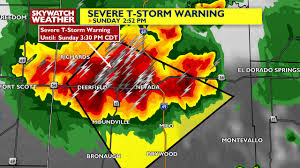Understanding Severe Thunderstorm Warnings

Introduction
Severe thunderstorm warnings are critical alerts that help keep the public informed and safe during extreme weather conditions. These alerts are issued by meteorological authorities when conditions are favorable for severe thunderstorms that can produce dangerous conditions including high winds, heavy rainfall, and hail. Understanding these warnings is vital, especially during the storm season, as they can save lives and prevent property damage.
What Triggers a Severe Thunderstorm Warning?
In Canada, a severe thunderstorm warning is issued when a thunderstorm is either occurring or is expected to occur within the short term, usually within the next few hours. Criteria for these warnings include severe wind gusts of 90 km/h or greater, heavy rain leading to flash flooding, large hailstones (over 2 cm in diameter), or tornado activity. These criteria are monitored through reports from storm spotters, radar technology, and weather satellites.
Recent Severe Thunderstorm Events
This past summer, several provinces, including Alberta and Ontario, experienced particularly severe thunderstorms, resulting in warnings being issued across various regions. In July 2023, Alberta faced intense storms that led to significant hail damage in areas around Calgary, with estimates of damage running into the millions. Ontario also saw heavy rainfall that caused localized flooding in Toronto, prompting transportation delays and emergency responses.
Preparing for Thunderstorms
Being prepared is crucial when a severe thunderstorm warning is issued. The following precautions are recommended:
- Stay tuned to local weather updates via radio, television, or weather apps.
- Secure outdoor items that could become projectiles in high winds.
- Create an emergency kit that includes necessities like water, non-perishable food, medication, and flashlights.
- Have a family plan in place that includes meeting points and communication methods.
Conclusion
Severe thunderstorm warnings are essential for public safety, allowing individuals and communities to prepare for potentially life-threatening weather. As climate change continues to impact weather patterns, experts anticipate an increase in both the frequency and intensity of severe thunderstorms. Therefore, staying informed and prepared is more critical than ever. Remember to always heed warnings from local authorities, as they provide guidance to help save lives and mitigate damage during these dangerous storms.




